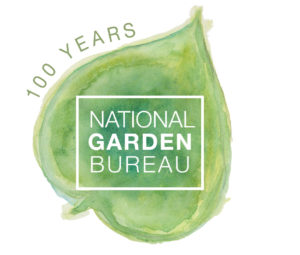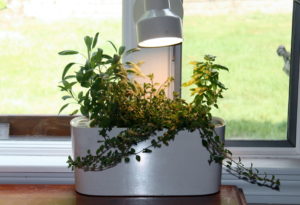What Gardeners Think about Gardening
December 1st, 2020
The National Garden Bureau, the non-profit education and marketing organization that came into being during the original World War I “Victory Garden” surge, is celebrating its 100th anniversary this year.

The National Garden Bureau surveyed nearly 2,000 gardeners and professionals to mark its century birthday.
To mark the occasion, the group surveyed nearly 2,000 gardeners and green-industry professionals to get a feel for what’s on gardeners’ minds – and where those thoughts are headed.
“Our main goal was to ask consumers about their vision of what their kids’ and grandchildren’s gardens will look like over the next 100 years,” said Diane Blazek, NGB’s executive director.
The survey unearthed some interesting findings.
A big one this year is just how much of a rebirth we’ve had in vegetable gardening.
For years, this was a lost art. In my many yard visits doing redesign consults, I rarely saw vegetable gardens – often not even a single tomato plant among the azaleas, barberries, burning bushes, and big lawns.
That’s been changing in recent years, largely fueled by younger, first-time gardeners.
All of a sudden, edible gardening skyrocketed this spring as stuck-at-home people saw empty grocery shelves and figured that a pandemic year might be a good time to grow their own food.
Many also were looking for ways to limit trips to grocery stores, and Blazek adds that “more people were cooking at home instead of going out, so they wanted their own fresh produce to try.”
The Chester County-based Garden Media Group estimates that 16 million new gardeners took to the soil this year, primarily COVID-fueled food gardening.
The main question now is whether this food-gardening trend will stick or whether we’ll all go back to buying everything at the store once COVID fades.
“Many of those who had a good experience will keep at it,” Blazek believes. “Some who failed will keep trying, and others will give up. Overall, we’re saying that even if just 10 percent of the new gardeners keep gardening, it’s good for everyone.”
The NGB survey also found new interest in growing edibles inside or in small at-home greenhouses – particularly herbs.
“People want herbs in the kitchen so they can cook with them, snip them right off at meal time, and serve them fresh,” Blazek said.
Others think there’s a future trend toward growing vegetables inside on a sunny windowsill – even in winter.
PanAmerican Seed, for example, is introducing a line of “Kitchen Minis” next year. Those are miniature-sized potted tomatoes, peppers, and other vegetables bred specifically for indoor growing without supplemental lights.
The plants will “ripen in pots as small as eight inches and in lower light conditions so you can have fresh flavors any time of year,” says Josh Kirschenbaum, PanAmerican’s vegetables account manager. “Our motto for Kitchen Minis is ‘No garden? No problem.’”
Beyond edibles, NGB found these tidbits:
* When asked what was stopping them from gardening more, gardeners over age 35 said it was “not enough space,” followed by “not enough time.”
For those under age 35, the answers flipped. No. 1 was “not enough time,” and No. 2 was “not enough space.”
For both age groups, the third most significant barrier was cost.
* When asked what would make them buy more plants, the No. 1 answer was “plants that stay healthier longer.”
“There’s a huge fear of failure out there,” said Blazek.
* What do people dislike most about gardening? That was loud and clear: weeding.
* What motivates people to buy plants? “To provide beauty,” “to provide food,” and “to help pollinators” were the top three reasons. But for those under age 35, the top reason was “to provide food.”
* On where people are getting their gardening information, the contrast was sharp between those under age 35 and those over.
Younger gardeners said their leading sources of gardening information are Pinterest and Instagram (tie for first), followed by friends and family, and then retailers and YouTube (tie).
Older gardeners, on the other hand, said retailers are their No. 1 source for gardening information, followed by websites, print magazines, and books.
* On what kind of plants gardeners plan to plant in the future, those under age 35 said their top three choices, in order, are 1.) fruits, 2.) vegetables, and 3.) herbs.
For those over age 35, the top three types are 1.) flowers, 2.) perennials, and 3.) vegetables.
* And on what our garden spaces of the future will look like, the No. 1 answer was that more space will be devoted to growing food.
The No. 2 answer was no grass (or less grass), No. 3 was smaller yards in general, and No. 4 was more indoor gardening.









